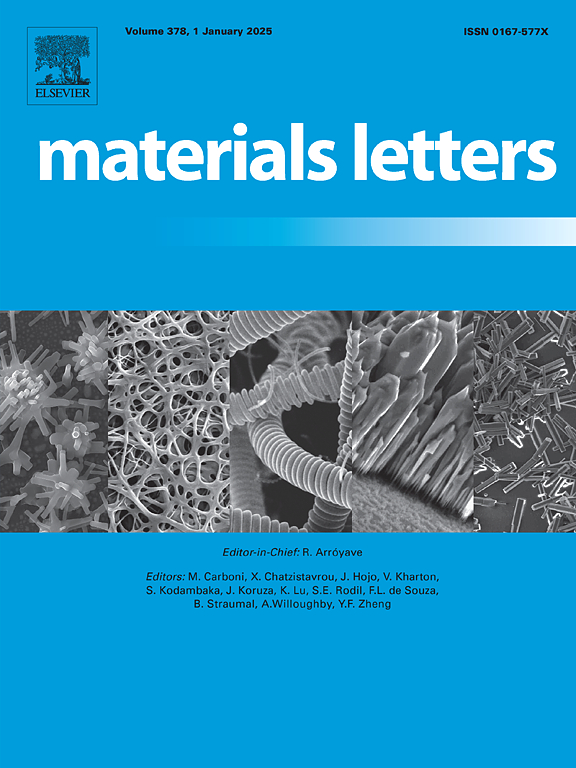Synthesis of oxides utilizing the explosive reaction characteristics of graphene oxide
IF 2.7
4区 材料科学
Q3 MATERIALS SCIENCE, MULTIDISCIPLINARY
引用次数: 0
Abstract
Explosion method is a new pathway for preparing oxides. However, it has several drawbacks, including complex process, poor safety, high impurities, and uneven particle size distribution. This study proposes a simple, safe, and easily controllable explosive synthesis method. This study utilizes the explosive reaction of graphene oxide under low-temperature heating to induce the decomposition of hydroxides and form oxides. The research results indicate that after the explosion reaction, hydroxides completely decompose and form oxides (MgO, ZnO, and TiO2). The impact force of the explosion was relatively small, effectively avoiding contamination. The SEM results indicate that the average grain sizes of MgO, TiO2, and ZnO are 41.7, 23.8, and 58.2 nm, respectively. Their grain size distribution was also relatively uniform, and no abnormally grown grains were observed.
求助全文
约1分钟内获得全文
求助全文
来源期刊

Materials Letters
工程技术-材料科学:综合
CiteScore
5.60
自引率
3.30%
发文量
1948
审稿时长
50 days
期刊介绍:
Materials Letters has an open access mirror journal Materials Letters: X, sharing the same aims and scope, editorial team, submission system and rigorous peer review.
Materials Letters is dedicated to publishing novel, cutting edge reports of broad interest to the materials community. The journal provides a forum for materials scientists and engineers, physicists, and chemists to rapidly communicate on the most important topics in the field of materials.
Contributions include, but are not limited to, a variety of topics such as:
• Materials - Metals and alloys, amorphous solids, ceramics, composites, polymers, semiconductors
• Applications - Structural, opto-electronic, magnetic, medical, MEMS, sensors, smart
• Characterization - Analytical, microscopy, scanning probes, nanoscopic, optical, electrical, magnetic, acoustic, spectroscopic, diffraction
• Novel Materials - Micro and nanostructures (nanowires, nanotubes, nanoparticles), nanocomposites, thin films, superlattices, quantum dots.
• Processing - Crystal growth, thin film processing, sol-gel processing, mechanical processing, assembly, nanocrystalline processing.
• Properties - Mechanical, magnetic, optical, electrical, ferroelectric, thermal, interfacial, transport, thermodynamic
• Synthesis - Quenching, solid state, solidification, solution synthesis, vapor deposition, high pressure, explosive
 求助内容:
求助内容: 应助结果提醒方式:
应助结果提醒方式:


